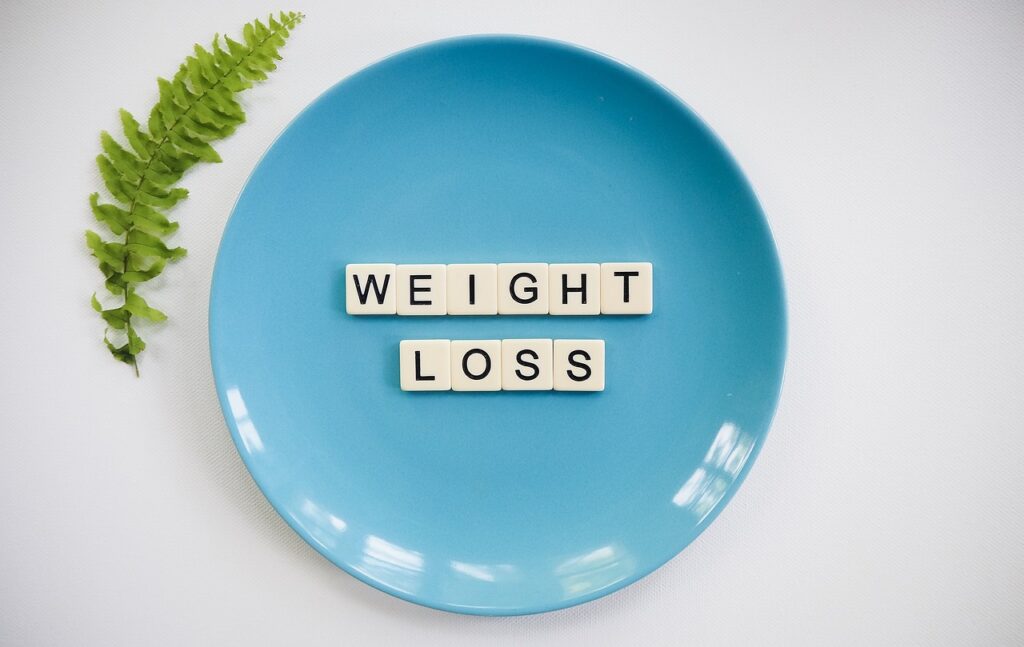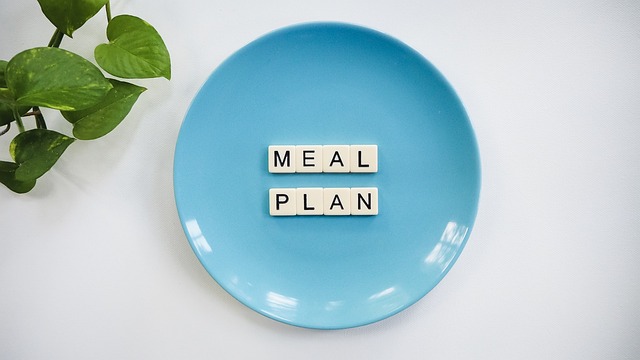
A successful weight loss plan involves a combination of healthy eating habits and regular exercise. However, with so many diets and weight loss plans available, it can be challenging to know which one is the most effective. To achieve long-term weight loss goals, it is essential to develop a sustainable and balanced diet plan that works for an individual’s lifestyle and preferences.
One of the key components of a successful weight loss plan is a calorie deficit. This means consuming fewer calories than the body burns, resulting in weight loss. However, it is important to note that extreme calorie restriction can be harmful to the body and may lead to nutrient deficiencies. Therefore, a balanced and sustainable calorie deficit should be established with the help of a healthcare professional or registered dietitian.
Another crucial component of a successful weight loss plan is incorporating nutrient-dense foods into the diet. These foods provide the body with essential vitamins, minerals, and fiber, while also promoting feelings of fullness and satiety. A diet rich in fruits, vegetables, lean proteins, and whole grains can help reduce the risk of chronic diseases and promote overall health.
Table of Contents
Nutritional Balance
Macronutrients
Macronutrients are essential for a successful weight loss plan. They are the building blocks of a healthy diet and include carbohydrates, proteins, and fats. Each macronutrient plays a different role in the body and should be consumed in the right proportions.
Carbohydrates provide energy to the body and should make up 45-65% of the daily caloric intake. Whole grains, fruits, and vegetables are excellent sources of carbohydrates.
Proteins help build and repair tissues and should make up 10-35% of the daily caloric intake. Lean meats, fish, beans, and legumes are excellent sources of protein.
Fats provide energy and help absorb certain vitamins. They should make up 20-35% of the daily caloric intake. Healthy fats like olive oil, nuts, and avocados are excellent sources of fat.
Micronutrients
Micronutrients are also essential for a successful weight loss plan. They include vitamins and minerals that are required in small amounts but are crucial for overall health. Eating a variety of fruits, vegetables, and whole grains can provide the body with the necessary micronutrients.
Hydration
Hydration is an important component of a successful weight loss plan. Drinking enough water helps the body function properly and can aid in weight loss. It is recommended to drink at least 8 glasses of water per day.
In summary, a successful weight loss plan requires a balanced diet that includes the right proportions of macronutrients, adequate micronutrients, and proper hydration.
Caloric Deficit
Calculating Daily Caloric Needs
To successfully lose weight, it is important to create a caloric deficit. This means consuming fewer calories than the body burns. To determine the appropriate daily caloric intake for weight loss, one can use an online calculator or consult with a registered dietitian.
The calculation takes into account factors such as age, gender, height, weight, and activity level. It is important to note that the daily caloric needs for weight loss may vary from person to person.
Tracking Calorie Intake
Once the daily caloric needs have been determined, it is important to track calorie intake. This can be done using a food diary, mobile app, or online tool. By tracking calorie intake, one can ensure that they are staying within their daily caloric limit and creating a caloric deficit.
It is important to note that while creating a caloric deficit is important for weight loss, it is also important to consume a balanced diet that includes all essential nutrients. It is recommended to consult with a registered dietitian to ensure a healthy and sustainable weight loss plan.
Dietary Approaches
Intermittent Fasting
Intermittent fasting is a dietary approach that involves alternating periods of fasting and eating. This approach has gained popularity in recent years due to its potential to aid weight loss, improve metabolic health, and reduce the risk of chronic diseases. There are several ways to practice intermittent fasting, such as the 16/8 method, the 5:2 diet, and the eat-stop-eat method.
Low-Carb Diets
Low-carb diets are dietary approaches that restrict the intake of carbohydrates, such as bread, pasta, and sugar, and emphasize the consumption of protein and fat. These diets have been shown to be effective for weight loss, improving blood sugar levels, and reducing the risk of heart disease. Some popular low-carb diets include the Atkins diet, the ketogenic diet, and the paleo diet.
Mediterranean Diet
The Mediterranean diet is a dietary approach that is based on the traditional eating habits of people in countries bordering the Mediterranean Sea. This diet emphasizes the consumption of fruits, vegetables, whole grains, legumes, nuts, fish, and olive oil, while limiting the intake of red meat, processed foods, and sugar. The Mediterranean diet has been associated with numerous health benefits, including a reduced risk of heart disease, stroke, and certain types of cancer.
Overall, these dietary approaches can be effective for weight loss and improving overall health. However, it is important to consult with a healthcare professional before starting any new diet plan.
Behavioral Strategies
Mindful Eating
Mindful eating is a technique that involves paying attention to the food being consumed, including the taste, texture, and smell. This can help individuals to eat more slowly and savor their food, which can lead to feeling more satisfied and less likely to overeat. It can also help individuals to be more aware of their hunger and fullness cues, which can prevent unnecessary snacking and overeating.
Consistent Meal Timing
Consistent meal timing involves eating meals at the same time each day. This can help individuals to regulate their hunger and prevent overeating. It can also help to stabilize blood sugar levels and prevent energy crashes throughout the day.
Portion Control
Portion control involves eating smaller portions of food. This can be achieved by using smaller plates, measuring out portions, and avoiding second helpings. By reducing portion sizes, individuals can still enjoy their favorite foods while consuming fewer calories overall.
Incorporating these behavioral strategies into a weight loss plan can help individuals to establish healthy habits and achieve long-term success.
Physical Activity
Physical activity is an essential component of any successful weight loss plan. It helps to burn calories, increase metabolism, and improve overall health. There are three main types of physical activity that should be included in a weight loss plan: cardiovascular exercises, strength training, and flexibility and balance exercises.
Cardiovascular Exercises
Cardiovascular exercises, also known as aerobic exercises, are activities that increase heart rate and breathing rate. These exercises help to burn calories and improve cardiovascular health. Examples of cardiovascular exercises include jogging, cycling, swimming, and brisk walking.
Strength Training
Strength training, also known as resistance training, is a type of exercise that involves using weights or resistance to build muscle. Muscle burns more calories than fat, so building muscle can help to increase metabolism and burn more calories. Examples of strength training exercises include weightlifting, push-ups, and squats.
Flexibility and Balance
Flexibility and balance exercises help to improve flexibility, balance, and posture. These exercises can also help to prevent injuries. Examples of flexibility and balance exercises include yoga, Pilates, and tai chi.
Incorporating all three types of physical activity into a weight loss plan can help to maximize weight loss and improve overall health. It is recommended to aim for at least 150 minutes of moderate-intensity or 75 minutes of vigorous-intensity aerobic exercise per week, as well as two or more days of strength training exercises per week.
Support Systems
Professional Guidance
Seeking professional guidance can be an important component of a successful diet and weight loss plan. A registered dietitian can provide personalized nutrition advice and help develop a meal plan that meets individual needs and preferences. They can also offer guidance on portion sizes, food choices, and meal timing.
In addition, a healthcare provider can monitor progress and provide medical support, as well as offer resources for managing any underlying health conditions that may be impacting weight loss efforts.
Social Support
Having a strong support system can also be crucial for success in a weight loss journey. This can include family, friends, or a support group. Social support can provide motivation, accountability, and encouragement, which can help individuals stay committed to their goals.
In addition, social support can help individuals navigate challenges and obstacles that may arise during their weight loss journey. This can include providing healthy meal options or joining in physical activity.
Overall, seeking professional guidance and building a strong social support system can be important components of a successful diet and weight loss plan.
Monitoring Progress
Regular Weigh-Ins
Regular weigh-ins are an important component of a successful weight loss plan. They help to track progress and provide motivation to continue with the plan. It is recommended to weigh oneself once a week, at the same time of day and wearing the same clothing. This will ensure accurate and consistent measurements.
Body Measurements
Body measurements, such as waist circumference, can provide additional information on progress. A reduction in waist circumference indicates a loss of belly fat, which is important for reducing the risk of chronic diseases. Along with waist circumference, other measurements such as hip circumference and body fat percentage can also be tracked to monitor progress.
Fitness Level
Monitoring fitness level is another important aspect of a successful weight loss plan. Keeping track of physical activity, such as the number of steps taken or the duration and intensity of exercise, can help individuals stay on track with their fitness goals. This can be done through the use of fitness trackers or simply by keeping a log of physical activity.
Overall, monitoring progress is crucial for the success of a weight loss plan. By tracking progress through regular weigh-ins, body measurements, and fitness level, individuals can stay motivated and make adjustments to their plan as needed.
Adjustments and Plateaus
Reassessing Caloric Needs
As a person loses weight, their caloric needs change. It is important to reassess these needs periodically to ensure that the diet plan is still effective. This can be done by using an online calculator or consulting with a healthcare professional.
Overcoming Weight Loss Plateaus
Weight loss plateaus can be frustrating, but they are a common occurrence. To overcome a plateau, it is important to make adjustments to the diet and exercise plan. This can include increasing physical activity, changing up the types of exercises being done, or adjusting the caloric intake.
It is also important to remember that weight loss is not always linear. There may be weeks where weight loss is minimal or non-existent, but this does not mean that progress is not being made. Staying consistent with the diet and exercise plan is key to long-term success.
Overall, making adjustments and overcoming plateaus is a normal part of the weight loss journey. By reassessing caloric needs and making necessary changes, and staying consistent with the plan, individuals can achieve their weight loss goals.
Sustainability and Maintenance
A successful diet weight loss plan must be sustainable and easy to maintain in the long term. Making small, gradual changes to one’s eating habits and lifestyle is key to achieving sustainable weight loss.
One effective strategy is to focus on adding healthy, nutrient-dense foods to the diet rather than restricting or eliminating certain foods entirely. This approach ensures that the body is receiving all the necessary nutrients while also reducing the intake of unhealthy, high-calorie foods.
Another important aspect of sustainability and maintenance is setting realistic goals and expectations. Rapid weight loss may be tempting, but it is often not sustainable in the long term. Slow and steady progress is more likely to result in lasting weight loss.
In addition, incorporating regular physical activity into one’s routine is crucial for maintaining weight loss. Exercise not only burns calories but also helps to build lean muscle mass, which can boost metabolism and improve overall health.
Overall, a successful diet weight loss plan must prioritize sustainability and maintenance. By making small, gradual changes to one’s eating habits and lifestyle, setting realistic goals, and incorporating regular physical activity, individuals can achieve lasting weight loss and improve their overall health and well-being.
Frequently Asked Questions
What are the key elements of a balanced diet for weight loss?
A balanced diet for weight loss should include a variety of nutrient-dense foods such as fruits, vegetables, whole grains, lean proteins, and healthy fats. It is important to focus on portion control and limit processed and high-calorie foods.
How can one create an effective weight loss plan without cost?
Creating an effective weight loss plan without cost is possible by focusing on whole foods and home-cooked meals. One can also incorporate physical activity into their daily routine by engaging in activities such as walking, jogging, or cycling.
What are the essential features of a weight loss action plan?
A weight loss action plan should include specific and measurable goals, a realistic timeline, and a plan for tracking progress. It should also include strategies for managing cravings and setbacks, as well as a support system.
Why are certain strategies critical for successful weight loss?
Certain strategies such as portion control, meal planning, and regular physical activity are critical for successful weight loss because they help create a calorie deficit and promote healthy habits. They also help prevent overeating and promote sustainable weight loss.
What constitutes a healthy weight loss eating plan?
A healthy weight loss eating plan should include a variety of nutrient-dense foods, limit processed and high-calorie foods, and focus on portion control. It should also be sustainable and adaptable to individual preferences and needs.
How should one structure a diet plan to achieve weight loss?
One should structure a diet plan to achieve weight loss by focusing on whole foods, incorporating lean proteins, healthy fats, and complex carbohydrates. It is also important to plan meals and snacks ahead of time, practice portion control, and stay hydrated.

